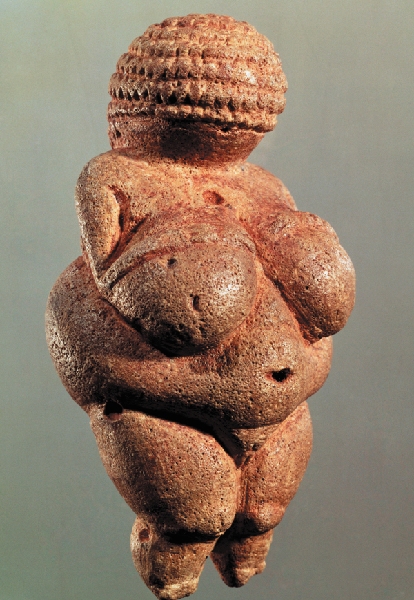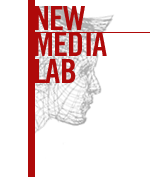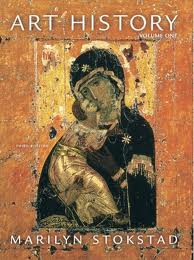Although I’d taught in the galleries at the Guggenheim before returning to school, when I began my academic program I also began my pedagogical baptism by fire, aka my teaching fellowship. I began where all other newbies start: with that strange, polymorphous beast, the art history survey. After my first semester, I realized that reinventing the wheel by writing each lecture from scratch was both time consuming and demoralizing, but that there was no standard, centralized pool of resources at CUNY that I could turn to as I learned the ropes. I had a great supervisor and generous peers (one of whom, Saisha Grayson, is co-developing parts of the this project) who could help out when I asked, but I began to imagine a permanent resource for all survey teachers that went beyond the supplementary teaching materials offered by Stokstad and Gardener, one that could be a dynamic, two-way street that built a community around it as it grew. How could everyone who was going through or had already passed the same initiation rite of teaching an art history survey (especially at CUNY colleges, where classes can be large and students are often ESL) help each other out, and leave resources for those who would follow in their footsteps?
So, new spring semester, new classes, and an exciting new project finally coming to fruition: AHResources, a peer-populated platform for sharing resources for teaching the art history survey. It’s something I’ve been working on for about a year, and I’m now affiliated with the New Media Lab at the Center for Learning & Media at the Graduate Center. There, I’m developing a website this spring where CUNY art survey teachers can both request and share survey lesson plans, PowerPoints, assessment materials, and more, helping each other through the often challenging first few years of teaching. There’s also a series of workshops beginning this semester, offering newer survey teachers the opportunity to join a master teacher who will walk through a succinct play-by-play lesson plan for the areas where a Western-emphasis education leaves some of us struggling. This spring, we’re lucky enough to have educator Joseph Loh and curator Soyoung Lee from the Met Museum offer templates for lectures on Japanese and Korean art, and professors Genevieve Hyacinthe and Karen Shelby guide us thorough African Art and creating meaningful writing assignments, respectively. (I’m lucky to be mentored by Karen at Baruch College, where she is pioneering an innovative Teaching with Technology grant project to bring museum spaces into the classroom via video).
It’s still tough to fit the arts of one continent into a single lecture – and hopefully the forum will invite debate on the value of what to leave *out* as much as what to include – but the object is to relieve the initial terror of the unknown. My hope is that, much like what the awesome Smarthistory.org and Khan Academy have done for both teachers and students in the classroom, my new project (no-so-snappily titled Art History Teaching Resources) can support emerging art survey teachers at home, at 2am, when they have a lecture on Oceanic pottery due the next day and are feeling a little overwhelmed. It’s where everyone starts, yet no one needs to feel like they have to invent a new written language to do it (unless you’re a Bronze Age Sumerian – an inside joke for those who teach the early part of the survey).
So, to that end, I’d be really interested in hearing (anonymously or otherwise) about experiences in teaching. What resources do you wish were available for early teachers of the art history survey? The Met’s Timeline is fantastic, but I’m talking about specific, synthesized-for-survey classroom teacher resources. Ready-made syllabi and detailed chapter-by-chapter lesson plans seem to top the list so far, but what else? I’d like to link or collaborate with whatever exists already, so are there excellent resources you turn to for lesson plans, ready-made PPTs, or great assignments? Are new online models for sharing materials with students – like Coursekit, for example – or the anti-plagiarism Turnitin.com an improvement on new teachers trying to wrestle with Bboard? What models do you think would work best for sharing art survey teaching resources (and I’m sticking with the survey for now as there’s less concern over “giving away” one’s work when it’s the same survey everyone else does)? And most imporantly, can you think of a better name than Art History Teaching Resources…..? As the website develops and the workshops occur this spring, I’ll report back here. If they don’t work, they’ll get refined or rethought as part of the overall experiment of teaching. If they do, the results will get shared as widely as possible – in the spirit of collaboration on which this enterprise is founded.









Pingback: History Teaching Resources | Articles On Teaching
Pingback: Open Enrollment | Sharing is Caring, and Canny | Art21 Blog
Pingback: Open Enrollment | Sharing is Caring, and Canny | Uber Patrol - The Definitive Cool Guide
Pingback: What Inspires Your Museum-Based Teaching? | Art History Teaching Resources